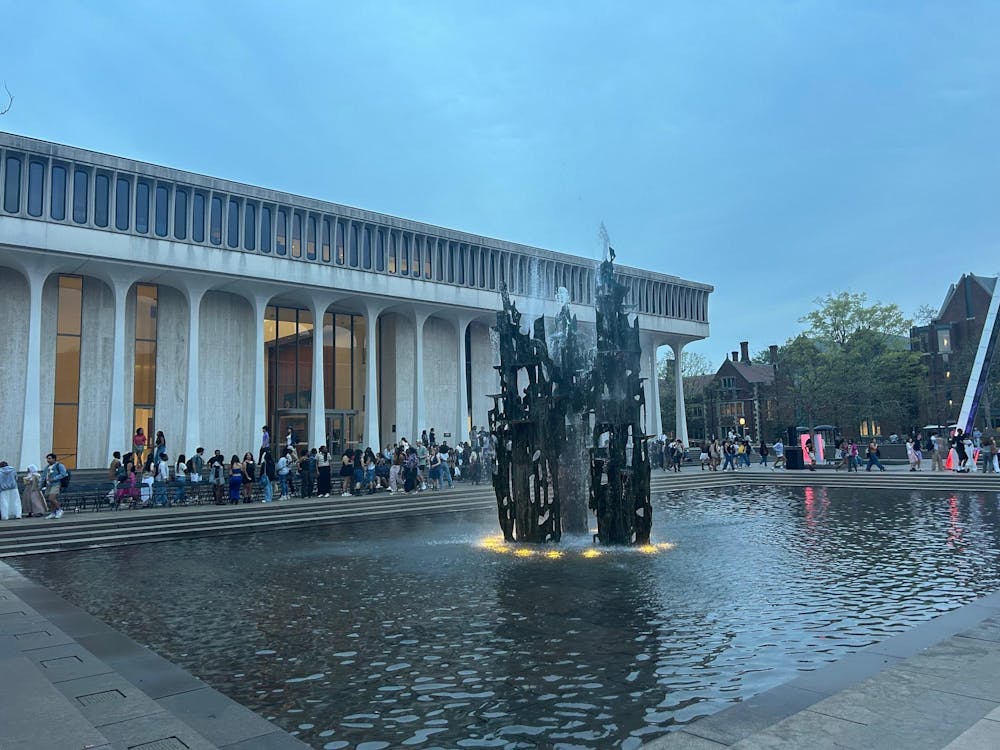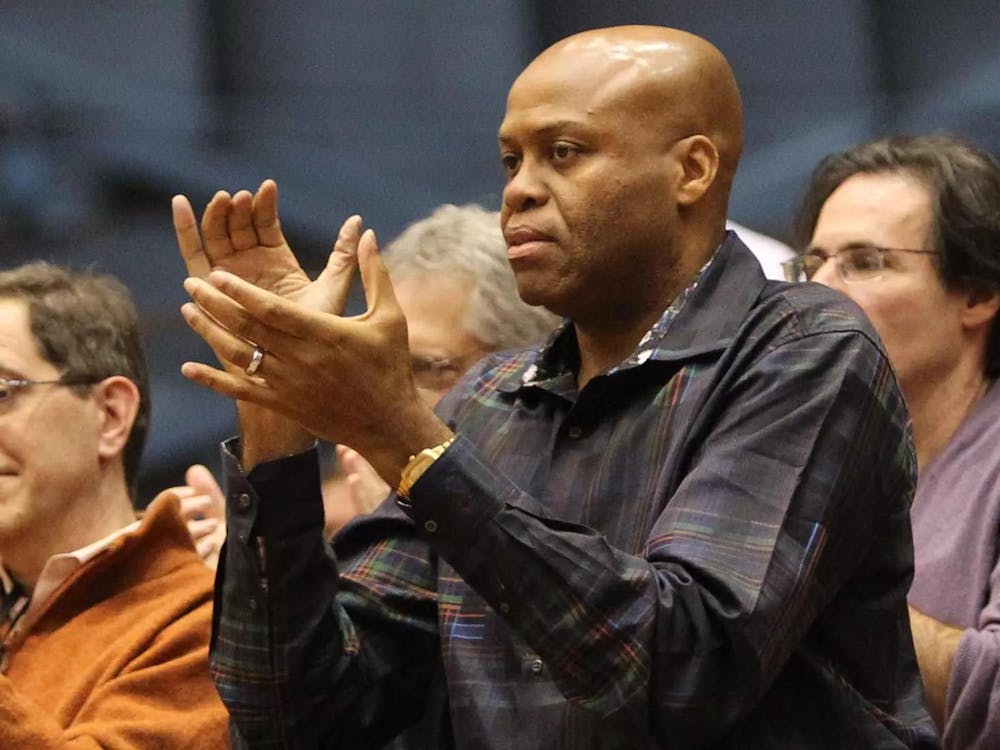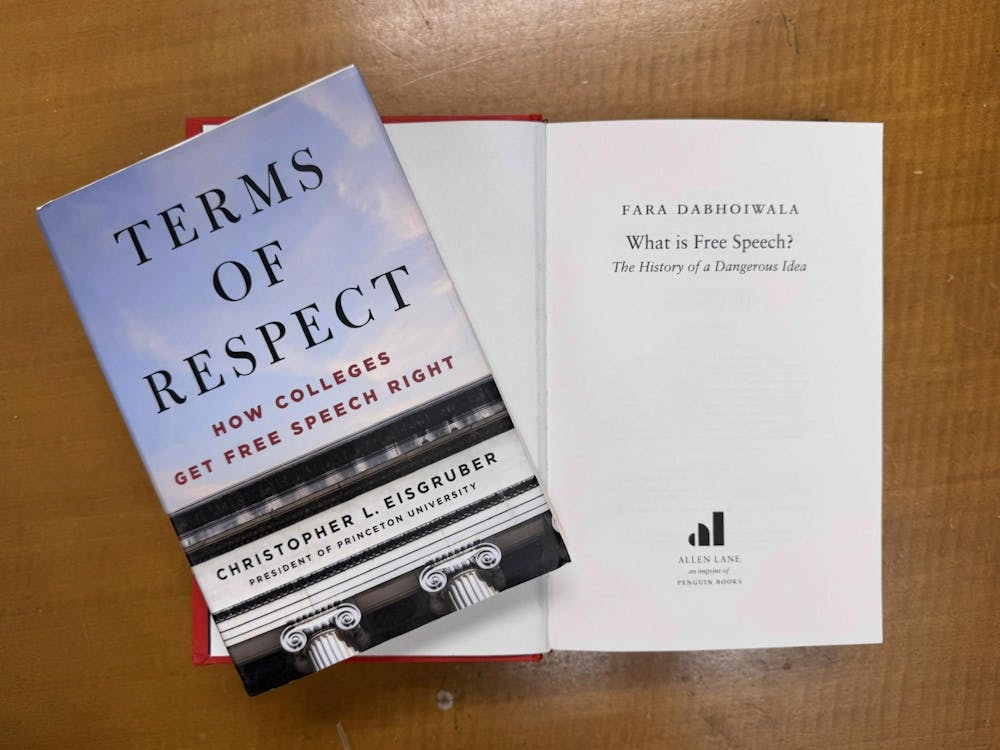Scudder Plaza had a new look this past month, trading its usual treatment as a tourist splash pad for a runway. At Sankofa, an annual African fashion show, the cool mist from the Fountain of Freedom lightly doused the rows of invested onlookers, letting the small chatter and club music fill the air.
This year’s show, titled “NTU,” was unique and captivating, a blend of elements sourced from a wide range of designers. ‘Ntu’ is a Bantu term referring to “the essence.” The show was split into four segments, each named after a different Bantu word.
“NTU reflects enduring cosmologies, resilience, and the powerful presence of Afro-mysticism throughout African and diasporic spiritual traditions. The show aimed to honor and embody those themes through every element, from fashion to performance,” Head Artistic Director Arrey Enow ’26 told The Daily Princetonian.
Organized by the student-run Sankofa Committee, preparations began in late December and continued until showtime in April. Designers hailed from Princeton to Parsons, and even abroad from countries such as Ethiopia.
The first models made their elegant entrance along the fountain’s border, flowing in with the gentle breeze. The first collection was presented as an artistic interpretation of ‘muntu,’ a Bantu word representing the abstract and ethereal. These pieces were an ensemble of harsh, dramatic jackets ranging from cream with black detail work to full monochromatic looks in all black.
From this first phase, a favorite piece of mine was sourced from Fashion Institute of Technology student Kassia Engelmann’s original work. Decked in sheer tulle fabric with a honeycomb gathering in the front, the dress’s layered train flowed calmly in the wind, letting the elements influence its shape.
Following Engelmann’s designs, the show featured a collection of jackets defined by sharp silhouettes around the necklines and exaggerated sleeves from HΛWII, a Parisian-based fashion with Ethiopian roots. Among the models adorned in these distinctive jackets, returning model Avery Fuller ’26 walked the runway wearing an oversized blazer.
“Being in Sankofa means not only getting to showcase the work of talented artists within the Black diaspora but also engaging with other members of the Black/African community here at Princeton,” Fuller said in an interview with the ‘Prince.’ “It’s the show that I credit for giving me the confidence I have today, and I wouldn’t be able to move in the way I do without it.”
The next segment was centered around ‘kuntu,’ a Bantu word reflecting the rich and vibrant earthly elements of the world. With a more colorful range, this collection went from deep earth tones to muted reds and blues across all fabrics. Many of the pieces were sourced from Parsons School of Design student designer Alameer Rosenje.
Building her portfolio in Sankofa as a returning model, Eva-Labelle Kenmoe ’27 was a standout during this segment. Kenmoe wore a metallic, dusty sage two-piece set that was paired with a matching bag and arm sleeves. To Kenmoe, this set was a personal favorite among all her looks during the show. In an interview with the ‘Prince,’ she said, “I thought it beautifully embodied the spirit [of earth].”
Moving on, the third phase, “KINTU,” focused on the more rhythmic flow of water. This collection played heavily into patterns and detailed beaded and embroidered work. With many of these works coming from Cute-Saint, a sustainable African fashion brand, a standout was the Nuer Shirt, which was made of a dyed canvas fabric with embroidered details.
“One piece I was absolutely obsessed with was the first outfit,” said model Chloe Riche ’27 on the dark, blue and green, coral-inspired outfit from the “KINTU” phase. “The blues meshed together very well here and I fell in love with it,” she said.

The final phase, “HANTU,” aimed to disrupt the peace of the previous collection with a fiery entrance. Models broke into an erratic sprint to the sound of sirens, a single blur of caution tape fashion-wear dashes around the fountain. ‘Hantu,’ another Bantu word, represents the fashion constantly burning to a new era.
Throughout this collection, the majority of pieces originated from the sustainable brand OSHOBOR. The unique element that brought special attention to this collection was the use of tassels.. Shaking and bouncing with each model’s step, they captured the essence of a finicky flame. Transitioning from a consistent ruby red to an ashy grey and black as the models walked by, the colors were a vibrant contrast to the marble background of the SPIA Building.
A highlight of this final selection was the Ekpen Set from OSHOBOR: a combination of velvet, lace, and wool. The velvet skirt’s weight rippled with each step, and the wool accented blazer defined a sharp frame, adding texture to this otherwise sea of red.
Overall this final phase brought a satisfying conclusion to the show. I witnessed what I felt was the representation of the elements that govern the very life force within our cosmos. As Enow told the ‘Prince,’ “Princeton can feel so distant from the fashion world, and there were moments when it felt like we were building something from nothing… [but] watching the campus show up to celebrate Black art and creativity made all the stress completely worth it.”
This year’s Sankofa show brought a new “essence” to the relationship between fashion and the Black arts, all on the refreshing runway of Scudder Plaza.
Amanda Hugas is a member of the Class of 2027 and a staff writer for The Prospect. She can be reached by her email at ah0942[at]princeton.edu.
Please send any corrections to corrections[at]dailyprincetonian.com.








